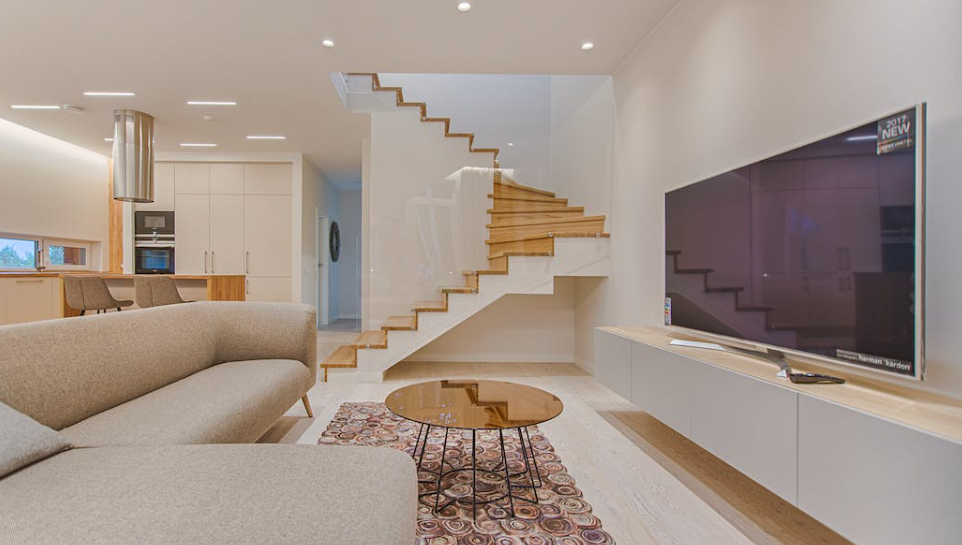
The Most Common Types of Stair Nosing Edge Trim
Stair nosing edges are used to protect the steps from the marks and scratches of daily wear and tear. Stair nosing edges are essential for anyone interested in maintaining their stairs and ensuring that their interior design is more aesthetically pleasing.
Stair nosings are available in a variety of shapes and sizes that can enhance any particular style for your overall aesthetic. Listed below are some of the most common shapes you will encounter, each type of stair nosing has its own benefits and suitability.

Square edges stand out clearly, and this stair nosing trim does have a very slightly rounded edge on the front edge that prevents dents and scratches. The clean lines of the square edges add a few aesthetic touches and are very attractive.
No overhang is a stair nosing that is flush with the riser and has no overhang. Stairs decorated with this type of stair nosing trim appear to be a single structure, meaning that the stair is a continuous shape, creating a modern, sleek look.
The half-round stair nose is also known as the stair nosing bullnose. The shape of the stair edge of a half-round stair nosing tread looks like a half-moon with smoothly rounded corners, but the edges are straight.
The leading edge of a half-round stair tread is often used as a "landing", referring to the additional extension of the bottom stair.
A full round stair nosing trim is a smooth, rounded curve that curves around the step and continues to the edge of the stair cornice and is primarily used for landings.
You will often see this stair nosing bullnose on larger staircases, where the full rounded cornice creates an elegant look, but is not as slip resistant as other nosing options.
The many benefits of stair nosing edge trims also include practicality, versatility, and impressive appearance, thereby improving the safety of the stairs.
With quality stair nosing treads and stair nosing anti slips, the long-term maintenance of your stairs becomes much easier because you don't need to replace or refurbish parts as much as you would without them.
Stair nosings are available in a variety of shapes and sizes that can enhance any particular style for your overall aesthetic. Listed below are some of the most common shapes you will encounter, each type of stair nosing has its own benefits and suitability.

Square Edge
Square edges stand out clearly, and this stair nosing trim does have a very slightly rounded edge on the front edge that prevents dents and scratches. The clean lines of the square edges add a few aesthetic touches and are very attractive.
NoOverhang
No overhang is a stair nosing that is flush with the riser and has no overhang. Stairs decorated with this type of stair nosing trim appear to be a single structure, meaning that the stair is a continuous shape, creating a modern, sleek look.
Half-Round Stair Nosing
The half-round stair nose is also known as the stair nosing bullnose. The shape of the stair edge of a half-round stair nosing tread looks like a half-moon with smoothly rounded corners, but the edges are straight.
The leading edge of a half-round stair tread is often used as a "landing", referring to the additional extension of the bottom stair.
Full Round Stair Nosing
A full round stair nosing trim is a smooth, rounded curve that curves around the step and continues to the edge of the stair cornice and is primarily used for landings.
You will often see this stair nosing bullnose on larger staircases, where the full rounded cornice creates an elegant look, but is not as slip resistant as other nosing options.
Aluminum Stair Nosing Tread
|
|
Aluminum Stair Tread Nosing
|
||||
|
|
Aluminum alloy
|
||||
|
|
|
|
|||
|
|
|||||
|
|
|||||
|
|
|||||
|
|
|||||
|
|
|
||||
|
|
|||||
|
|
|||||
|
|
|||||
|
|
|
||||
|
|
|||||
|
|
|
||||
|
|
|||||
Is Stair Nosing Trim Worth the Investment?
The many benefits of stair nosing edge trims also include practicality, versatility, and impressive appearance, thereby improving the safety of the stairs.
With quality stair nosing treads and stair nosing anti slips, the long-term maintenance of your stairs becomes much easier because you don't need to replace or refurbish parts as much as you would without them.




.jpg?imageView2/1/w/100/h/100)

